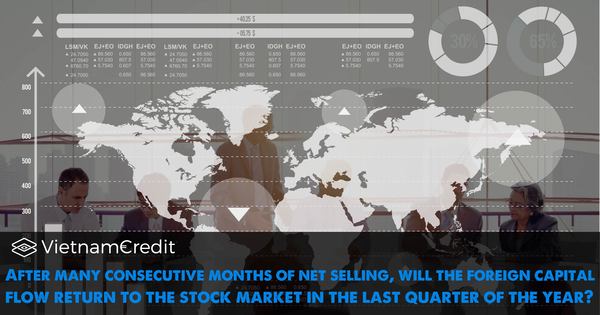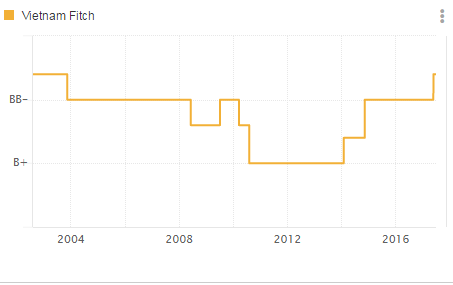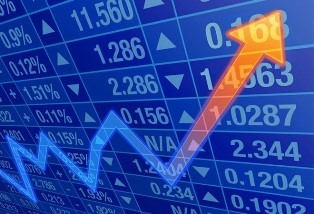In the last quarter of the year, the market is expected to receive the capital inflows from foreign ETFs (as the FED lowered interest rates, and the US-China tensions cooled), domestic ETFs (due to the introduction of the new index sets) and the money flows from the Frontier Markets funds.
Recently, the pressure of foreign net sales on the stock market was quite strong. On HoSE alone, the net selling value of foreign investors from the beginning of August is approximately VND 2,800 billion. The continuous net selling of foreign investors has affected significantly the psychology of domestic investors and is one of the main reasons why VN-Index has not been able to conquer the 1,000 point level.
Statistics show that foreign investors' transactions often have similarities with market movements. Accordingly, the market is usually only positive when receiving resonance from foreign investors.
On the contrary, the market trend is often sideways and even negative if foreign investors turn to net selling. Therefore, the movement of foreign capital flows has always been paid special attention to by investors.
After 2 months of strong net selling, what we are waiting for now is that the pressure of foreign net selling will ease and net buyers will return. Can that happen? From the writer's perspective, the trend of foreign capital flows will be more positive in the last months of the year, based on the following factors:
The introduction of new internal ETFs
Recently, HoSE announced the rules for building and managing 3 new index sets, including Vietnam Diamond Index, Vietnam Financial Select Index, Vietnam Leading Financial Index.
Although it has not been officially announced, according to forecasts of some securities companies, the stocks in the above index baskets are mostly foreign room. The creation of new indices is expected to lead to the creation of ETFs, helping to address the foreign investors' investment needs in quality stocks that have run out or have negligible room. This we have witnessed in the domestic VFMVN30 ETF ETF when continuously attracting Korean and Thai investors in recent years.
According to some securities companies, it is likely that these indexes will soon be published and index-based ETFs will be released in the fourth quarter of this year, which can attract foreign capital flows and market support.
The return of the foreign ETFs
Besides the ETFs inflow based on index sets, the market also has the opportunity to receive capital flows from foreign ETFs. Recently, the net selling pressure of foreign investors in Vietnam's stock market partly has come from the withdrawal of foreign ETFs, with the US-China trade tension being one of the major influencers.
However, foreign ETFs may return to the market in the last months of the year if the US-China trade tensions show signs of "cooling down". In recent days, there have been many indicators in the US economy that are not good when the PMI in September was only at 47.85 points, falling for the 2nd month in a row and being the lowest level in over 10 years.
Not only that, but job reports also show that the signals are not positive. ADP and Moody’s Analytics said companies recruited an additional 135,000 people in September, down from 157,000 in August
With the US economy having not so positive indicators, the market can expect US-the China tensions to not escalate too much as previous months. Besides, the bad signal of the US economy is also the impetus for FED to lower interest rates in the coming time, thereby bringing the cash flow back to the market more positively.
The Frontier Markets Capital Inflow increased the proportion of Vietnamese stocks
In the third quarter review held in August, the proportion of Vietnamese stocks in the MSCI Frontier Markets Index basket - the index used by many funds as the benchmark in the Frontier group – reached 18.48%, becoming the 2nd largest after Kuwait with 31.48%.
According to MSCI estimations, if Kuwait is upgraded to Emerging Markets in 2020, the proportion of Vietnamese stocks in the MSCI Frontier Markets Index will be up to 25.2%.
Although it is not until 2020 when Kuwait is officially upgraded, the proportion of Vietnamese stocks in the MSCI Frontier basket will increase significantly. However, many investment funds are using the MSCI Frontier Markets Index that has increased the proportion of Vietnamese stocks quite recently, even surpassing the proportion in the benchmark and this trend will probably not stop.
In addition to the funds that have increased the proportion of Vietnamese stocks, there are still quite a few funds that are maintaining a share of Vietnam stock below the benchmark. The most typical name is the Schroder ISF Frontier Markets Fund, an investment fund of approximately 1 billion USD.
According to the figures on August 31, the proportion of Vietnamese stocks in the Schroder ISF Frontier Markets Fund is only 8.7%, much lower than the 18.48% in the MSCI Frontier Markets Index basket that the fund used as a benchmark.
If the ratio is raised by the benchmark of 18.48%, it is estimated that the fund will buy about USD 100 million more Vietnamese stocks (2,300 billion VND).
>>> Moody’s Credit Ratings: Impacts On Vietnam’s Stock Market
Source: CafeF























































